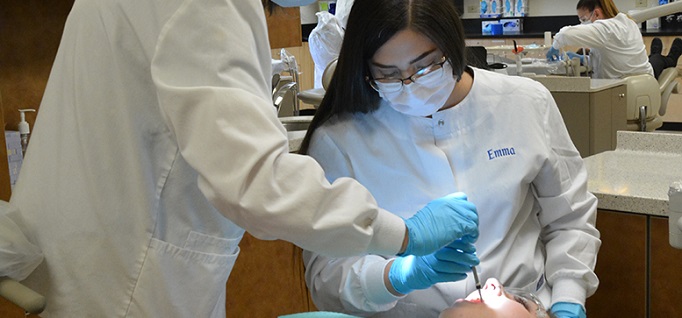HPOG creates a path out of poverty
By Ellie Ashford
December 11, 2019
Health Profession Opportunity Grants are helping lower income students get the skills needed for jobs in healthcare.
Ana Karen Lopez – the oldest of seven children in a family that immigrated from Mexico to Texas – dreamed of becoming a nurse but couldn’t afford a college education without extensive financial assistance.
Thanks to a federal HPOG grant, Lopez was able to quit her dead-end receptionist job and enroll full-time in a licensed vocational nurse program at San Jacinto College without having to spend her own money on textbooks, scrubs or medical supplies. After graduating and passing the National Council Licensure Examination in 2017, she attained a job at Octapharma Plasma, earning $23 an hour.
Lopez is one of thousands of HPOG grantees across the country able to climb out of poverty into a family-sustaining job in healthcare. The program, which stands for Health Profession Opportunity Grants, provides funding to lower-income people, focusing on those receiving benefits from the federal Temporary Assistance for Needy Families (TANF) program.
The HPOG program pays for all college expenses and provides individualized assistance and emergency funding to help recipients overcome barriers that could cause them to drop out. Of the 32 HPOG-funded partnerships in the U.S., 11 are headed by community colleges or tribal colleges.
HPOG is scheduled to expire in September 2020, but community college officials hope it will be extended for at least another year. Meanwhile, the House Ways and Means Committee in October passed legislation – supported by the American Association of Community Colleges – to reauthorize the program for five years and increase annual funding from $85 million to $425 million.
Studying wraparound services
HPOG is part of a national study to measure the impact of wraparound services. Within each HPOG-funded partnership, about one-third of the students who apply for an HPOG grant are randomly assigned to a control group, and the rest are in a “treatment group,” where they receive more intensive services.
San Jacinto College (SJC) in Texas has enrolled 1,033 students in its HPOG program in the past four years, and 965 of them have received healthcare training, says Lydia Chavez-Garcia, the former program director who is now a consultant.
Lower-income students struggle with basic needs, so the grant provides flexibility to help them overcome those barriers, Chavez-Garcia says. The grant has paid for gas cards, laptops, immunizations and more.
“It’s not just about taking one training course,” Chavez-Garcia says. It’s about getting students onto a health careers pathway. A student can earn a short-term certified nursing assistant (CNA) or phlebotomy credential, work for a while, then come back for more training “to really get out of the poverty cycle,” she says.
Forty-nine HPOG students are working toward degrees as registered nurses, Chavez-Garcia says, and 48 have received a licensed practical or vocational nursing certification and are earning $22 to $23 an hour.
SJC collaborates with employers to pinpoint high-skill, high-growth occupations, along with its vendor partners, workforce board and other colleges that provide healthcare training to HPOG students, such as Alvin Community College, Lee College and College of the Mainland, adds program director DeShawn Pitre.
“Our team goes to those sites a couple of times a month for informational and intake sessions, so those students don’t have to travel to our college,” Chavez-Garcia says. “That’s another way we remove barriers.”
A strong partnership
Rogue Community College (RCC) received a five-year, $14 million HPOG grant as the lead agency in the Southern Oregon Health Occupations Poverty Elimination Project, which also includes Worksource Rogue Valley, the Oregon Department of Human Services and the Rogue Workforce Partnership.
More than 694 unemployed and underemployed people enrolled in the program, says Lisa Parks, administrator of the HPOG grant at the college. Program participants included Supplemental Nutrition Assistance Program (SNAP) recipients and youths aging out of foster care, as well as TANF recipients, she says. Many of them had minimal or no college experience, and a significant number lacked a high school diploma.
Among the students who received HPOG funds, 207 have completed a high school equivalency exam, 641 have entered healthcare training and 250 are working in healthcare in the community, Parks notes. Many of them are still in school, as it takes longer for lower-income students with life barriers to complete a training program. The partnership also used completion specialists to improve participants’ success rates.
All the training programs are one year or less and lead to a certificate in RCC’s career and technical education department. Former HPOG students are working as nursing assistants, medical assistants, community health workers, certified nursing assistants, medical receptionists, medical information clerks, phlebotomists, home health aides, dental assistants, massage therapists, medical insurance coders and emergency medical technician.
About 30 percent of them plan to complete a two-year degree at the community college or pursue a bachelor’s degree.
There’s more to the story! Read the rest of the article in CC Daily.


